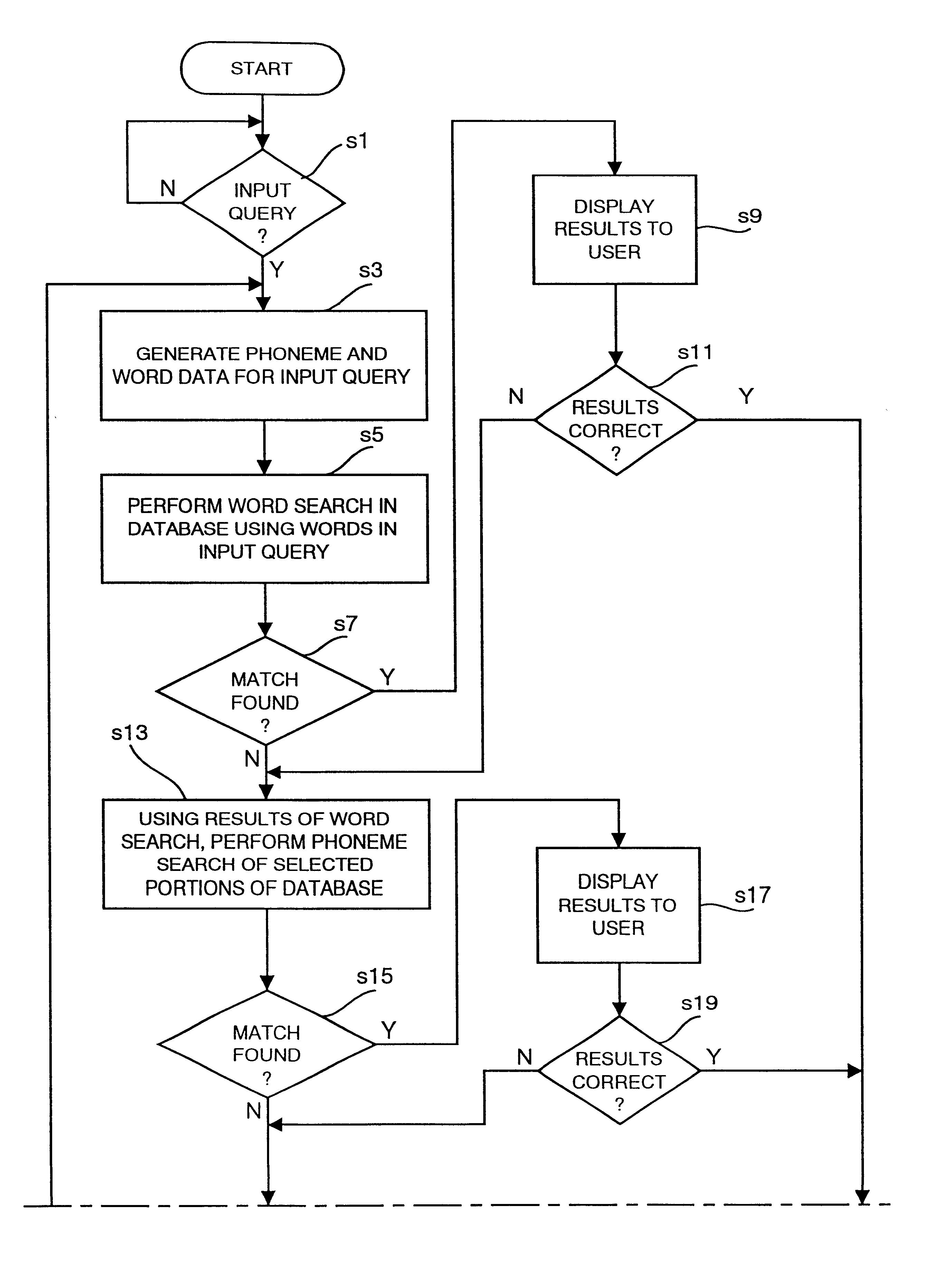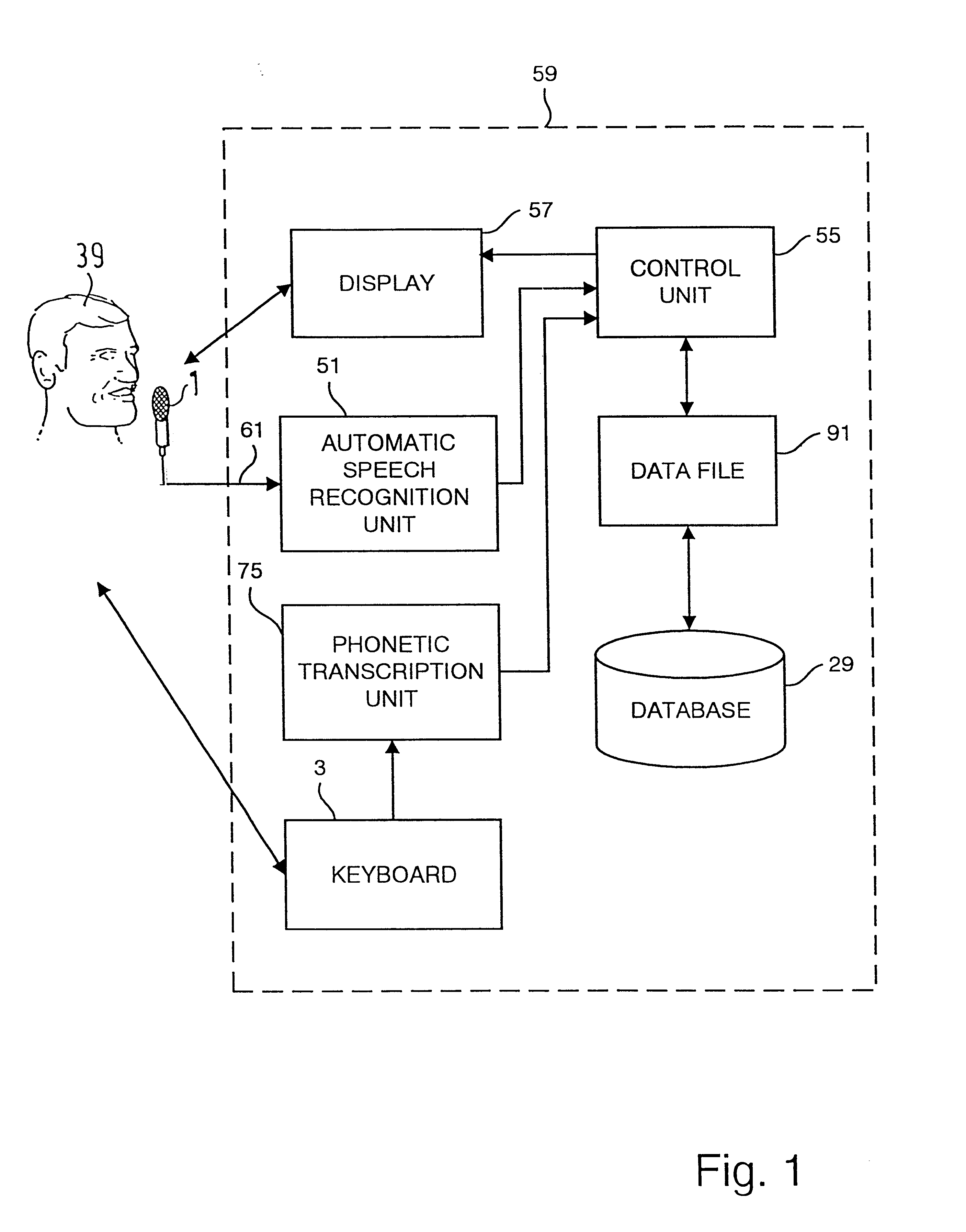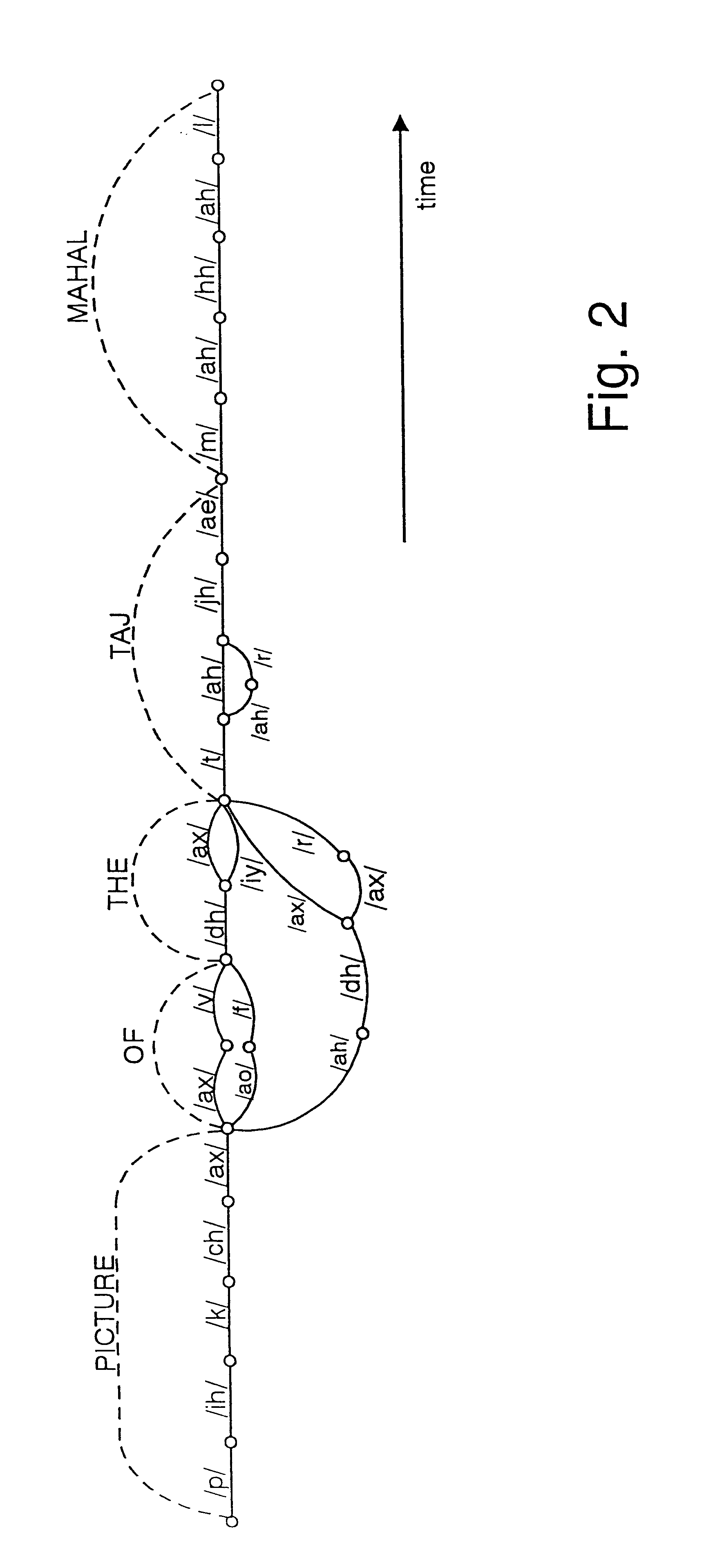Language recognition using sequence frequency
a sequence frequency and language recognition technology, applied in the field of language recognition using sequence frequency, can solve the problem that the search type is not suitable for various kinds of databases
- Summary
- Abstract
- Description
- Claims
- Application Information
AI Technical Summary
Benefits of technology
Problems solved by technology
Method used
Image
Examples
Embodiment Construction
[0047]Embodiments of the present invention can be implemented using dedicated hardware circuits, but the embodiment to be described is implemented in computer software or code, which is run in conjunction with processing hardware such as a personal computer, workstation, photocopier, facsimile machine, personal digital assistant (PDA) or the like.
[0048]FIG. 1 illustrates the form of a user terminal 59 which allows a user to input typed or voiced annotation data via the keyboard 3 and microphone 7 for annotating a data file 91 which is to be stored in a database 29. In this embodiment, the data file 91 comprises a two dimensional image generated by, for example, a camera. The user terminal 59 allows the user 39 to annotate the 2D image with an appropriate annotation which can be used subsequently for retrieving the 2D image from the database 29. In this embodiment, a typed input is converted, by the phonetic transcription unit 75, into phoneme (or phoneme-like) an...
PUM
 Login to View More
Login to View More Abstract
Description
Claims
Application Information
 Login to View More
Login to View More - R&D
- Intellectual Property
- Life Sciences
- Materials
- Tech Scout
- Unparalleled Data Quality
- Higher Quality Content
- 60% Fewer Hallucinations
Browse by: Latest US Patents, China's latest patents, Technical Efficacy Thesaurus, Application Domain, Technology Topic, Popular Technical Reports.
© 2025 PatSnap. All rights reserved.Legal|Privacy policy|Modern Slavery Act Transparency Statement|Sitemap|About US| Contact US: help@patsnap.com



